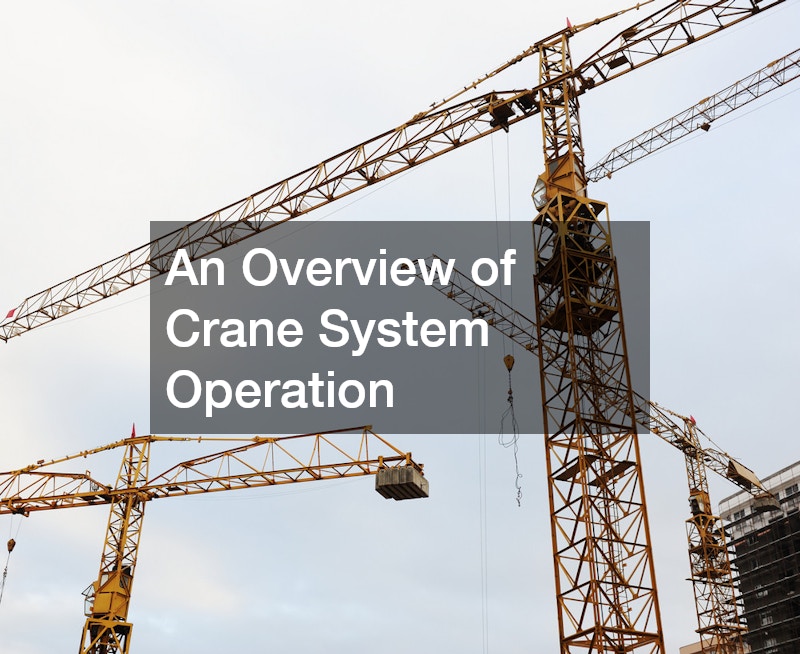Cranes are essential machines in various industries, including construction, manufacturing, shipping, and logistics. They are designed to lift, move, and position heavy loads with precision and efficiency. Understanding the basic operation of a crane system is crucial for ensuring safe and effective use. This overview will explore the key components of crane systems, their functions, and how they work together to perform lifting tasks.
Key Components of a Crane System
Hoist: The hoist is the primary lifting mechanism of a crane. It consists of a drum or wheel that winds and unwinds the lifting cable, chain, or rope, enabling the crane to raise and lower loads. Hoists can be powered by electricity, hydraulics, or pneumatics, depending on the type of crane and its application.
Trolley: The trolley is the component that moves horizontally along the crane’s bridge or boom. It carries the hoist and allows the load to be positioned along the length of the crane’s span. The trolley’s movement provides flexibility in placing loads at different points within the crane’s operating range.
Bridge or Boom: The bridge or boom is the horizontal structure that supports the trolley and hoist. In overhead cranes, the bridge spans the distance between the crane’s runway beams, while in mobile cranes, the boom is the extendable arm that reaches out to lift loads. The bridge or boom is crucial for determining the crane’s reach and load positioning capabilities.
Runway: The runway consists of rails or beams on which the crane’s bridge or trolley travels. In overhead cranes, the runway is mounted on columns or girders, providing a path for the crane to move across the workspace. The runway’s length determines the crane’s operational coverage area.
Controls: Crane systems are operated using a control system, which can be manual, wired, or wireless. The controls allow the operator to maneuver the crane’s hoist, trolley, and bridge or boom to lift and position loads. Advanced cranes may have automated or computer-controlled systems for precise and efficient operation.
Counterweight: In mobile and tower cranes, a counterweight is used to balance the load and prevent the crane from tipping over. The counterweight is typically located on the opposite side of the boom and is essential for maintaining stability during lifting operations.
Basic Operation of a Crane System
The operation of a crane system begins with the setup and inspection of the crane to ensure it is in good working condition. The crane operator must check the hoist, trolley, bridge or boom, and controls to verify that everything is functioning correctly. Once the crane is ready for use, the operator follows these basic steps:
Load Attachment: The load is securely attached to the crane’s hoist using appropriate rigging equipment, such as slings, shackles, or hooks. Ensuring the load is balanced and properly secured is critical for safe lifting.
Lifting the Load: The operator uses the controls to raise the load by winding the hoist. The lift should be smooth and steady to avoid jerking or swinging, which could destabilize the load or cause it to collide with nearby objects.
Positioning the Load: The operator moves the trolley along the bridge or boom to position the load over the desired location. The crane’s movement should be controlled and gradual to maintain stability and prevent accidents.
Lowering the Load: Once the load is in position, the operator lowers it by unwinding the hoist. The load should be lowered slowly and carefully to ensure it is placed accurately and safely.
Securing the Crane: After the operation, the crane should be returned to a safe resting position, and the load should be unhooked and secured. The crane should be powered down and locked out if it will not be used immediately.
Safety Considerations
Safety is paramount in crane operations. Operators must be trained and certified to use crane systems and should always adhere to safety guidelines and regulations. Regular inspections and maintenance are necessary to keep the crane in optimal working condition and to prevent accidents.
.

